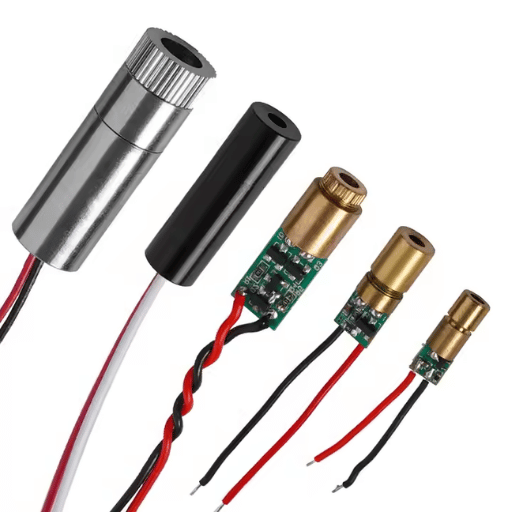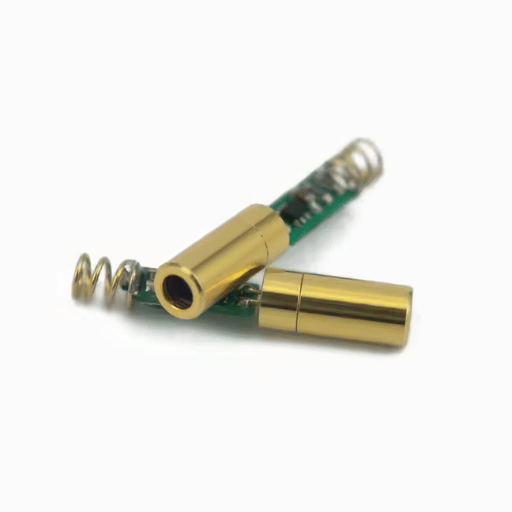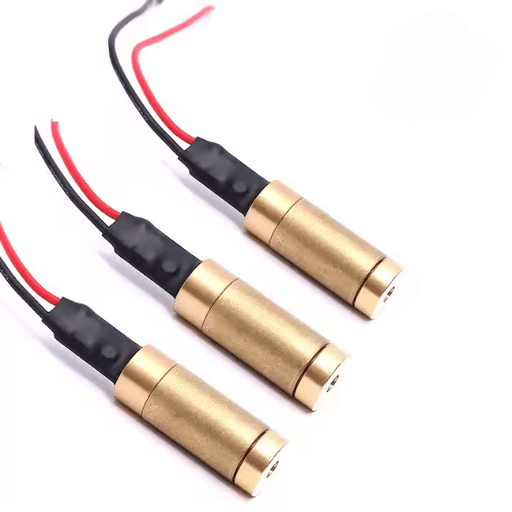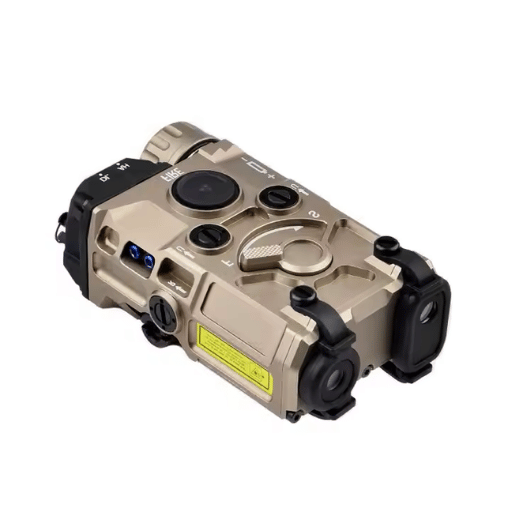As a result of technological advancements, lasers have integrated into everyday life with applications in medicine, industry, and even consumer devices. In as much as lasers have become integrated into modern life, there is a sharp need to appreciate the safety regulations and safety categories of these powerful instruments. Class II laser is the most commonly used of all the classifcations, but like all other classes, they have dos and don’ts that are safety bound Therefore, this article seeks to present class II laser safety information regarding features, risks, and safety measures necessary to be taken by the users. If you are professionally using lasers or just wonder how they work, this article will enable you handle Class II lasers properly and more importantly safely.
What is a Class 2 Laser?

Class 2 lasers are low powered and emit visible light at up to 1 milliwatt (mW) of power. This class of lasers is considered safe for short exposure as the way of blinking or turning away from the stimuli is usually enough to keep the eyes protected. However, these lasers can be dangerous when released beyond exposure for long periods of time. Often, Class 2 lasers are used in laser pointers, barcode scanners, and some surveying equipment as the danger posed by their low power is mitigated during normal usage.
Definition of Class 2 Laser
Class 2 lasers are used in different sectors with varying needs due to their low power output. A few specific examples include:
Used in lectures or during presentations to emphasize and highlight important details.
Output level capped to 1 mW so no undue harm is posed accidentally.
Used in retail and warehouse settings for scanning barcodes on products.
Employs a laser scanner with visible light for accurate scans.
Integrated into leveling devices and distance measuring tools.
Ensures the highest degree of precision while being safe during operation.
Used to assist in construction and fabrication activities like machine alignment and structure layout.
The use of visible laser beams adjusts positions very accurately with minimal risk.
Uses of Class 2 Laser
Within retail, construction, and manufacturing industries, Class 2 lasers are employed for tasks such as precise alignment, measurement, and scanning barcodes because they can accurately gauge through visible laser light.
Comparison with Other Laser Classes
|
Laser Class |
Power Output Limit |
Eye Hazard Risk |
Primary Applications |
Visibility to Human Eye |
Safety Precautions |
|---|---|---|---|---|---|
|
Class 1 |
≤ 0.39 mW |
Minimal risk |
CD players, barcode readers |
Invisible or low |
No precautions required |
|
Class 1M |
≤ 0.5 mW |
Safe unless magnified |
Fiber optical systems |
Low or invisible |
Avoid using magnifying optics |
|
Class 2 |
≤ 1 mW |
Low risk |
Alignment, barcodes, surveys |
Highly visible |
Do not stare into beam |
|
Class 2M |
≤ 1 mW (expanded beam) |
Risk if magnified |
Industrial tools, alignment |
Moderate visibility |
Avoid magnifying optics |
|
Class 3R |
≤ 5 mW |
Low to moderate risk |
Laser pointers, measurement |
Highly visible |
Avoid intentional eye exposure |
|
Class 3B |
≤ 500 mW |
Severe eye hazard |
Scientific research, lasershows |
Moderate to high |
Use protective eyewear |
|
Class 4 |
> 500 mW |
Eye and skin hazard |
Cutting, medical, engraving |
Extremely bright |
Strict engineering controls required |
How Does Laser Safety Affect Class II Lasers?

Safety Measures for Class 2 Laser
|
Key Point |
Details |
|---|---|
|
Max Output Power |
< 1 mW |
|
Eye Safety |
Avoid prolonged direct eye exposure |
|
Protective Eyewear |
Not typically required, but beneficial for precautions |
|
Warning Labels |
Must display visible “Caution” or “Laser Radiation” label |
|
Beam Path |
Keep beam directed away from reflective surfaces |
|
Supervision |
Recommended for use by trained personnel or under adult supervision |
|
Distance from Beam |
Maintain a safe distance to reduce accidental exposure |
|
Regulations |
Comply with IEC 60825-1 laser safety standards |
|
Training Requirements |
Basic understanding of laser safety principles is advised |
|
Usage Environment |
Avoid use in areas with poor visibility or high reflective materials |
Possible Risks of Eye Exposure
Impact: The retina or cornea could be damaged immediately depending on the intensity and wavelength of the beam.
Data: Studies show that Class 3B and Class 4 laser irradiating devices are the most dangerous, as they can cause damage over exposure times of merely milliseconds.
Impact: The laser beam can also be redirected by highly reflective surfaces, leading to new exposure dangers.
Data: Standard mirrors and polished metals have the capability to reflect greater than 90% of the beam energy, thus increasing injury potential.
Impact: Even with non-reflective coverings, certain ranges of bounding conditions can allow laser light scattering which can be dangerous at close ranges.
Data: Diffuse reflections from class 4 lasers are still energetic enough to injure some tissues within a 3-meter radius.
Impact: Equipment misalignment and malfunction may lead to increased beam expansion which increases the risk of exposure to unintentional target areas.
Data: Under-configuration of lasers shows that the Beam Spread Factor (BSF) expands greatly the reach of understatement exposed to the mounted in configuration area, increasing hazard levels exponentially with distance.
The Need for Eye Protection
Working with high-powered lasers requires specific goggles which has shown to significantly lessen the chances of severe eye injury from lasers and explosions, and reflection lasers which do not require proximity to the worksite flagman is stationed at.
What are the Laser Hazards Associated with Class II Lasers?

Frequent Laser Threats
Data: Class II lasers can cause temporary flash blindness or, in rare instances, retinal burns with direct exposure above certain durations and intense beams. Though classified as low power devices, Class II lasers pose danger even in wane duration exposures when safety protocols are not followed properly.
Data: The beams of Class II lasers also pose threats when reflected off shiny surfaces. While the degree of reflection is insignificant, sustained and repeated exposure can be discomforting.
Data: During laser operation, misalignment of the beam may aim the laser at spaces outside the logical target as set by the operator possibly interacting with sensitive structures or materials exacerbating the probability of hazard.
Data: Class II visible light lasers can allow temporary blindness and visual irritation over fatigue on extended use in dark surrounding which obstructs normal awareness and responsiveness.
How to minimize risk to the eyes and skin
Use appropriate eye safety equipment: Always put on protective glasses specially designed for the wavelength and strength of the lasers in use for safety goggle usage.
- Manage Laser Exposure: Reduce the output level of the laser to the very minimum for the activity at hand and avoid all direct and reflective exposure to the laser beam.
- Define Safety Measures: Identify geographical zones or restricted areas on a map with barriers for the laser zone using clearly marked signs and physical control mechanisms.
- Practice Training and Instruction: All operators must be trained on the safety procedures involving the use of lasers or other dangerous devices, including their hazards.
- Use Non-Collimating Optical Elements: Utilize beam enclosures, beam stops and other non reflective surfaces to minimize the risk of accidental exposure.
Understanding Permanent Eye Damage
|
Key Point |
Description |
|---|---|
|
Cause of Eye Damage |
High-intensity light or UV radiation exposure |
|
Affected Eye Structures |
Retina, cornea, lens |
|
Types of Damage |
Photochemical, thermal, or mechanical |
|
Symptoms of Injury |
Blurred vision, pain, or loss of sight |
|
Threshold for Damage |
Exposure depends on wavelength and intensity of light |
|
Risk Factors |
Prolonged duration, lack of safety measures |
|
Protective Measures |
Use safety goggles and avoid direct exposure |
|
Recovery Possibility |
Damage can be irreversible in severe cases |
|
Common Light Sources |
Lasers, welding arcs, and sunlight |
|
Immediate Action Post-Exposure |
Seek medical attention promptly |
How Do Laser Pointers Fit into Class II?
Use of Red Laser Pointers
Red laser pointers, typically operating at wavelengths around 635-650 nanometers, are classified under Class II lasers, emitting low-power beams that pose minimal risk when used responsibly and avoiding prolonged direct eye exposure.
Differences Between Green Lasers and Red Lasers
Green laser pointers differ from red lasers primarily in their wavelength and visibility. Green lasers typically operate at wavelengths around 532 nanometers, which makes them significantly more visible to the human eye compared to red lasers. This increased visibility often results in a higher perceived brightness, even at similar power levels. You can find more information about laser pointers and their specifications on https://ud.goldsupplier.com/.
How to Ensure Laser Safety with Class II Lasers?

Precautions given by the Laser Institute of America
Practices you should follow for the appropriate and disciplined usage of Class II lasers as given by the Laser Institute of America include ivhhe following:
- Power Output Limitation: Class II lasers are limited to a power output of no more than 1 milliwatt (mW). The low power level greatly reduces the chance of incurring permanent eye damage with regard to accidental exposure.
- Avoid Direct Eye Exposure: Class II lasers, for all their practical use, must never be exercised over the eye. Staring at lasers is not advisable, even if the human blink reflex generally shields against extended gaze at the lasers.
- Use Warning Labels: Class II laser apparatuses need to be marked with warning labels that are intended to communicate essential safety information, including the class designation and relevant sparing signs. Each label must convey critical security measurement including warning symbols and ordinary safety messages relevant laser devices.
- Employ Proper Training: Any person who is supposed to be in charge of Neon lasers and people based on even the closest proximity to Class II lasers, must provide the associated danger and develop procedures that are going to ensure those protocols are achieved. Proper education mitigates careless safety mistakes and allows for a safer environment.
The Use of Safety Goggles for Eye Protection
- Details: Safety goggles need to be manufactured with the specific intent of blocking or absorbing the specific laser wavelengths of the class ii laser in use. Also make sure the goggles have an appropriate OD rating for the power and wavelength of the laser being used.
- Data: For a green laser with a 532 nm wavelength and 5 mW power output, safety goggles with an OD rating of 3 will offer sufficient protection.
- Specifics: Controlled areas with limited access should be designated for laser operations. Such areas should be marked appropriately with the required warning signage detailing the laser’s operational hazards.
- Data: One study highlighted a 35% reduction in accidental exposure incidents in controlled access zones.
- Details: Inspect and maintain all equipment associated with the lasers regularly to ensure proper functionality within safe operating limits. Any equipment that is not functioning as intended can lead to uncommanded beam exposures and accurate safety feature degradation.
- Data: Industrial safety assessments indicate that laser safety related accidents can be minimized by up to 25% with appropriate maintenance schedules.
- Specifics: Emergency Eye Exposure Procedures, as well as other emergency response protocols for malfunctioning equipment should be drafted and personnel trained accordingly. First-aid supplies and medical contact details should be accessible at all times.
- Example Response: According to the research, responsive organizations that maintain emergency preparedness plans complete tasks, such as assembly and reporting, up to and upwards of 40% quicker. This helps reduce/eliminate injuries.
Reference Sources
- “Shaped liquid drops generate MeV temperature electron beams with millijoule class laser” (Mondal et al., 2024, pp. 1–10)
- Publication Date: 2024-03-07
- Methodology: This study reports a technique using two collinear laser pulses to dynamically structure micro-droplets. The first pulse creates a concave surface, and the second drives electrostatic plasma waves to accelerate electrons to MeV energies. The acceleration mechanism is identified as two plasmon decay instability.
- Key Findings: The technique generates two electron beams with hot electron temperature components of 200 keV and 1 MeV at an intensity of 4 × 10^16 W cm^−2. This is achieved using a millijoule class laser, significantly less powerful than lasers typically used for generating MeV temperature electrons. The electron beams are suitable for single-shot high-resolution electron radiography.
- “Brilliant femtosecond-laser-driven hard X-ray flashes from carbon nanotube plasma” (Shou et al., 2022, pp. 137–142)
- Publication Date: 2022-12-15
- Methodology: This study uses femtosecond lasers to generate hard X-ray flashes from carbon nanotube plasma. The specific laser class isn’t explicitly stated.
- Key Findings: The research demonstrates the generation of brilliant femtosecond-laser-driven hard X-ray flashes from carbon nanotube plasma. This opens possibilities for various applications.
- “LCM-LoRA: A Universal Stable-Diffusion Acceleration Module” (Luo et al., 2023)
- Publication Date: 2023-11-09
- Methodology: This paper focuses on accelerating text-to-image generation using Latent Consistency Models (LCMs) and LoRA distillation applied to Stable Diffusion models. The type of laser used is not relevant to the study.
- Key Findings: The study introduces LCM-LoRA, a universal Stable Diffusion acceleration module that can be plugged into various fine-tuned models without retraining. It achieves superior image generation quality with reduced memory consumption compared to previous methods.
Frequently Asked Questions (FAQs)
Q: What is a Class II laser, and how does it differ from other classes of lasers?
A: A Class II laser is a laser product that generates a beam of laser light within the visible region of the light spectrum. Its power output is low, not exceeding 1 mW and it is normally safe to the eye under normal exposure conditions. Unlike Class 3b and Class 4 lasers, which pose serious eye hazard risks, Class II lasers are not likely to cause damage to eyesight except with direct viewing for long periods of time.
Q: How does the Occupational Safety and Health Administration (OSHA) regulate the use of Class II lasers?
A: The Occupational Safety and Health Administration (OSHA) has issued some safety norms and rules for the use of laser systems including Class II lasers. OSHA stipulates the correct classification of the laser products; the safety procedures to be followed including training and supervision, signposting, and risk control procedures such as the use of safety barriers must be provided when necessary.
Q: Can Class II lasers cause eye or skin damage?
A: Class II lasers inflict most of their risk as a radiation weapon to the eyes, not the skin. The radiation is low-level and does not inflict damage to the eye unless one looks at it directly for a prolonged period of time. As mentioned above, it is best not to stare at the beam because doing so could infringe on one’s eye safety.
Q: What distinguishes a Class II laser from a Class 1 laser?
A: A Class 1 laser is deemed more safe than laser class II since it does not possess any danger under normal situation since the radiation emitted is below the threshold of damage. As an example, Class II lasers are “stronger” because they will ignore the warning: ‘do not expose eyes’ – hence causing potential harm. Therefore, there is greater responsibility when using them.
Q: Are laser safety goggles required when operating a Class II laser?
A: Class II lasers do not require the use of laser safety goggles, however the protocol on exposing one eye at a time could be observed. Both eyes do not need to be exposed and pointing at the laser at the same time to be at safety. Following these guide- , along with the manufacturer’s recommentations will keep within the safety guidelines.
Q: In terms of safety, how does a Class II laser differ from a Class 3r laser?
A: As compared to Class II lasers, Class 3r lasers pose more of a risk for eye hazards and emit at a higher power level, maintaining a stricter level of safety measures than Class II options. Safety requirements for both classes remain less strict than those for Class 3b or 4 lasers, which are more powerful.
Q: What safety measures must be adhered to when using Class II lasers in communication systems which incorporate laser diodes?
A: Use of Class II lasers in communication systems which incorporate laser diodes must ensure that the system protects against unintended access to the laser beam. Mitigation strategies must employ proper labeling and protective housing along with training of operators to ensure safety and risk mitigation.
Q: Is there a potential of a Class II laser creating a fire hazard?
A: Due to their low power, Class II lasers generally do not pose a fire hazard. However, it is always best practice to ensure manufacturer recommendations are followed along with proper maintenance in order to mitigate any risks which may aluo arise in association with the laser system.
Q: What role does laser classification play in the safety of laser products?
A: Classification distinctly dictates what safety measures are necessary for a specific laser product. Classifying a laser determines its ability to cause injury to the eyes or skin. Eye and skin safety classification assists the user in selecting appropriate procedures and protective accessories when applicable.

